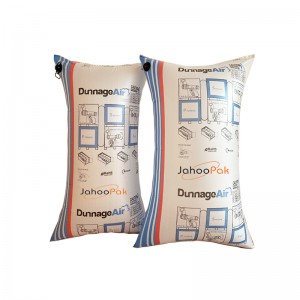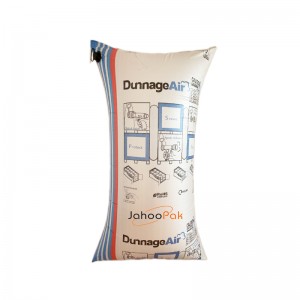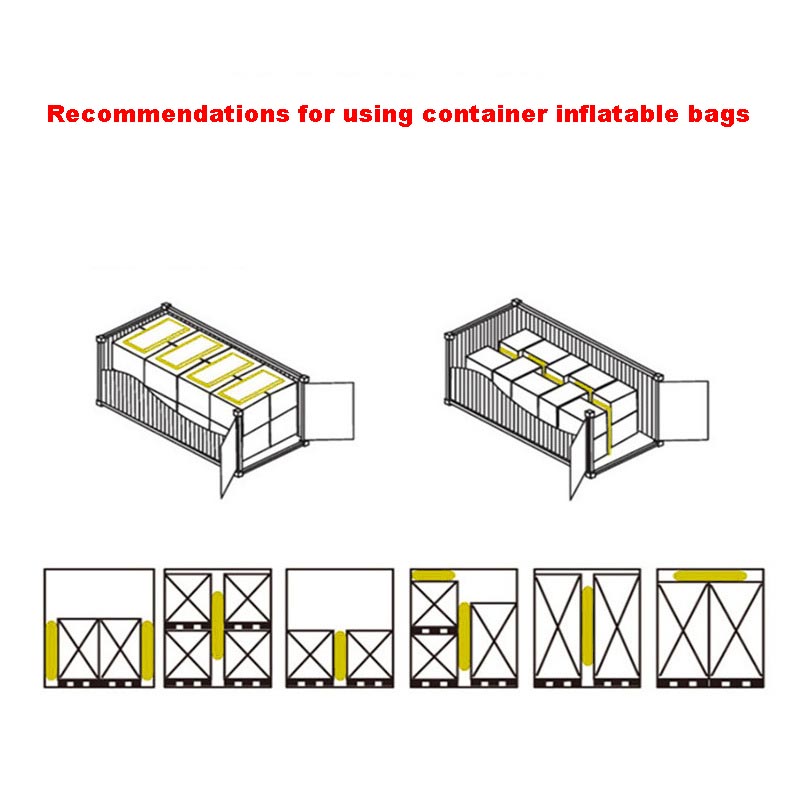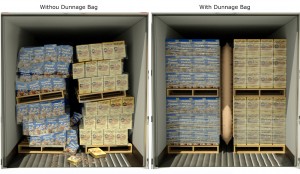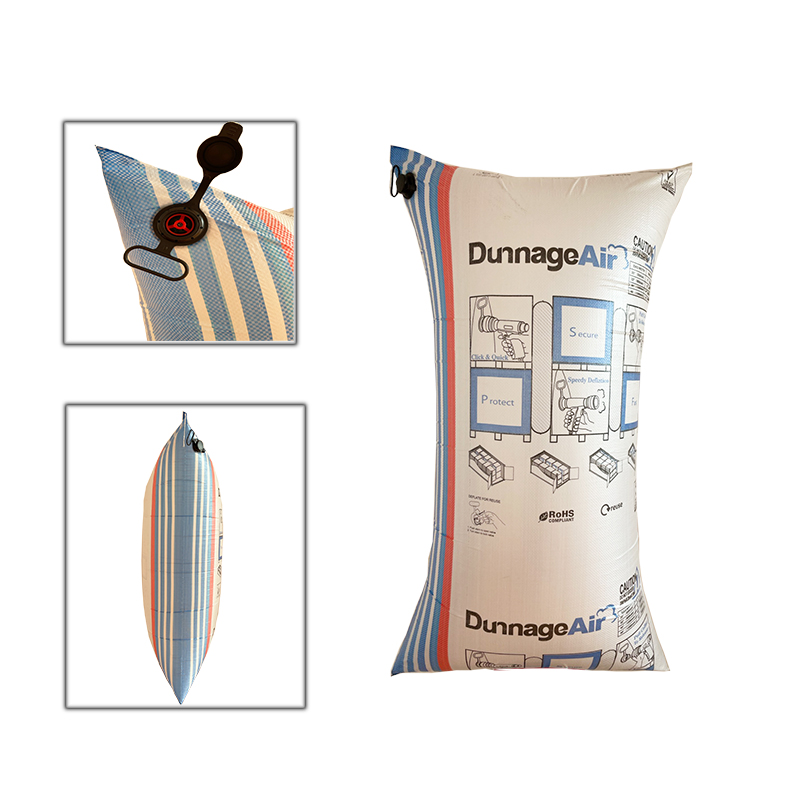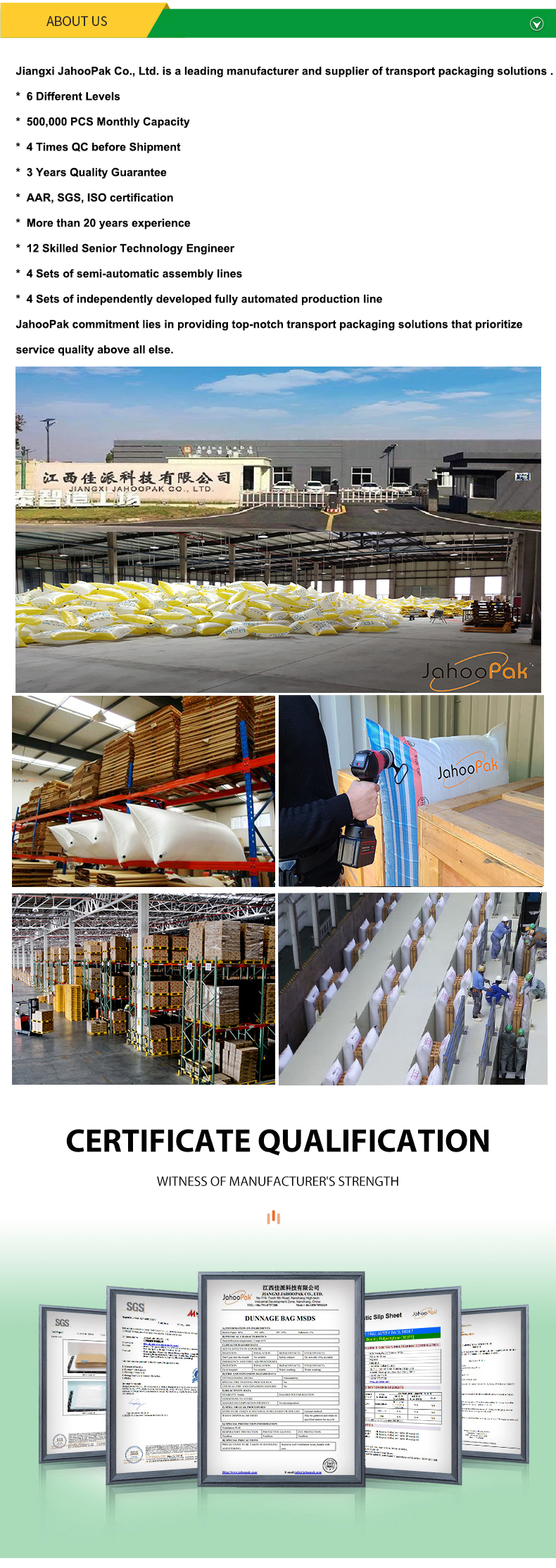Product profile
JahooPak air dunnage bags are high-quality inflatable cargo securement solutions designed to prevent shifting and damage during transportation. Made from durable, multi-layered woven polypropylene (PP) material, they provide strong burst resistance and reliable protection for goods in containers, trucks, and rail shipments.
Product application
1. Select the Right Size
- Measure the gap between cargo pallets or boxes.
- Choose a bag slightly larger than the gap (e.g., for a 30cm gap, use a 35-40cm bag).
2. Position the Bag Properly
- Place the deflated bag vertically or horizontally in the empty space.
- Ensure it sits evenly between cargo, not folded or pinched.
3. Inflate the Bag
- Use an air pump (hand pump, electric pump, or compressor).
- Inflate to recommended pressure (usually 0.15-0.35 bar / 2-5 PSI).
- Do not overinflate (risk of bursting) or underinflate (ineffective support).
4. Secure & Inspect
- Check that the bag is firm but slightly compressible.
- Ensure cargo is tightly packed with no movement.
5. Deflate & Reuse After Shipping
- After unloading, puncture the valve to release air.
- Fold and store for future use.
Why need use the air dunnage bag for container
1. Prevent Cargo Shifting During Transit
- Containers experience vibrations, sudden stops, and tilting during transport (by ship, truck, or rail).
- Air dunnage bags fill empty spaces between cargo, securing items in place and preventing movement that could cause damage.
2. Protect Goods from Impact & Crushing
- They act as a cushion, absorbing shocks and reducing the risk of breakage, scratches, or deformation.
- Especially useful for fragile, high-value, or unevenly shaped loads.
3. Cost-Effective & Efficient Load Stabilization
- Cheaper and faster than traditional methods like wooden bracing or foam blocks.
- Lightweight, taking up minimal space when deflated.
4. Versatile & Adaptable
- Can fit irregular gaps in containers, pallets, or trucks.
- Adjustable inflation allows customization based on load requirements.
5. Reduce Labor & Handling Time
- Quick to install and remove compared to manual blocking and bracing.
- Reusable (if undamaged), saving long-term costs.
6. Improve Safety & Compliance
- Prevents accidents caused by shifting cargo (e.g., container door bursts).
- Meets international shipping standards (like IMO/CTU guidelines).
The advantage of air dunnage bag
1. Superior Cargo Protection
- Prevents Shifting: Fills voids between pallets or goods, keeping them from moving during transit.
- Absorbs Shock & Vibration: Acts as a cushion against impacts, reducing damage risks.
- Distributes Pressure Evenly: Prevents crushing or deformation of sensitive goods.
2. Cost-Effective Solution
- Cheaper than Wood/Metal Bracing: No need for expensive timber, steel frames, or foam blocks.
- Reusable (If Undamaged): Can be deflated, stored, and reused for multiple shipments.
- Reduces Insurance Claims: Fewer damaged goods mean lower losses and claims.
3. Fast & Easy to Use
- Quick Installation: Simply place the bag in gaps and inflate (manually or with an air pump).
- No Special Skills Needed: Faster than manual blocking and bracing.
- Lightweight & Compact: Takes minimal storage space when deflated.
4. Versatile for Different Cargo Types
- Fits Irregular Gaps: Adapts to uneven spaces between pallets, boxes, or machinery.
- Works in Various Transport Modes: Containers, trucks, rail cars, and sea freight.
- Suitable for Fragile & Heavy Loads: Protects electronics, glass, automotive parts, etc.
5. Enhances Safety & Compliance
- Prevents Accidents: Stops cargo from shifting and bursting container doors.
- Meets IMO/CTU Guidelines: Complies with international shipping safety standards.
6. Eco-Friendly Option
- Reduces Waste: Unlike single-use wood bracing, air bags can be reused.
- Some Are Recyclable: Certain bags are made from recyclable materials.
Company profile






